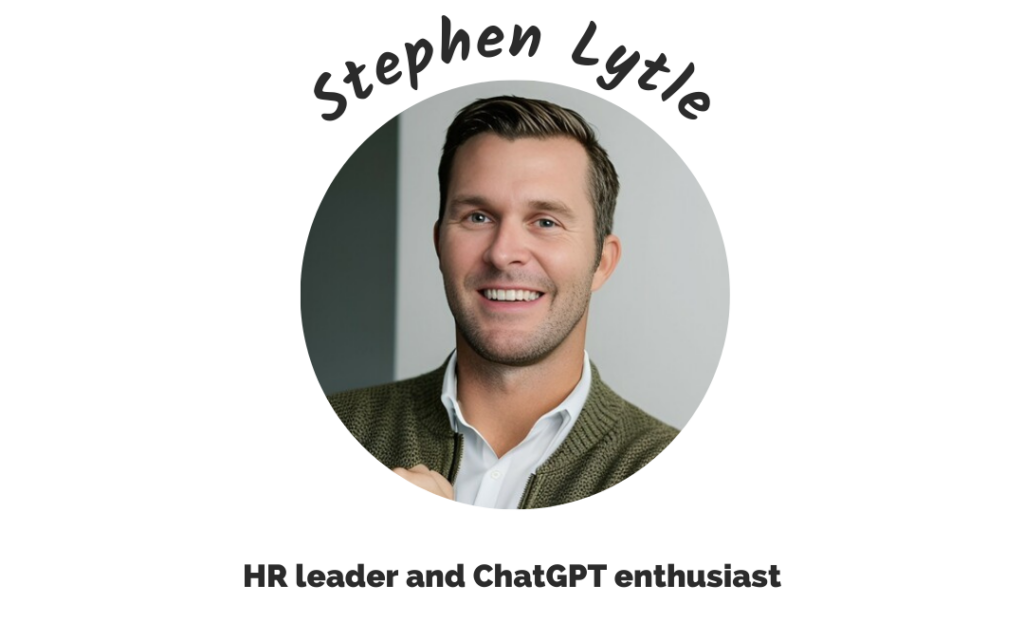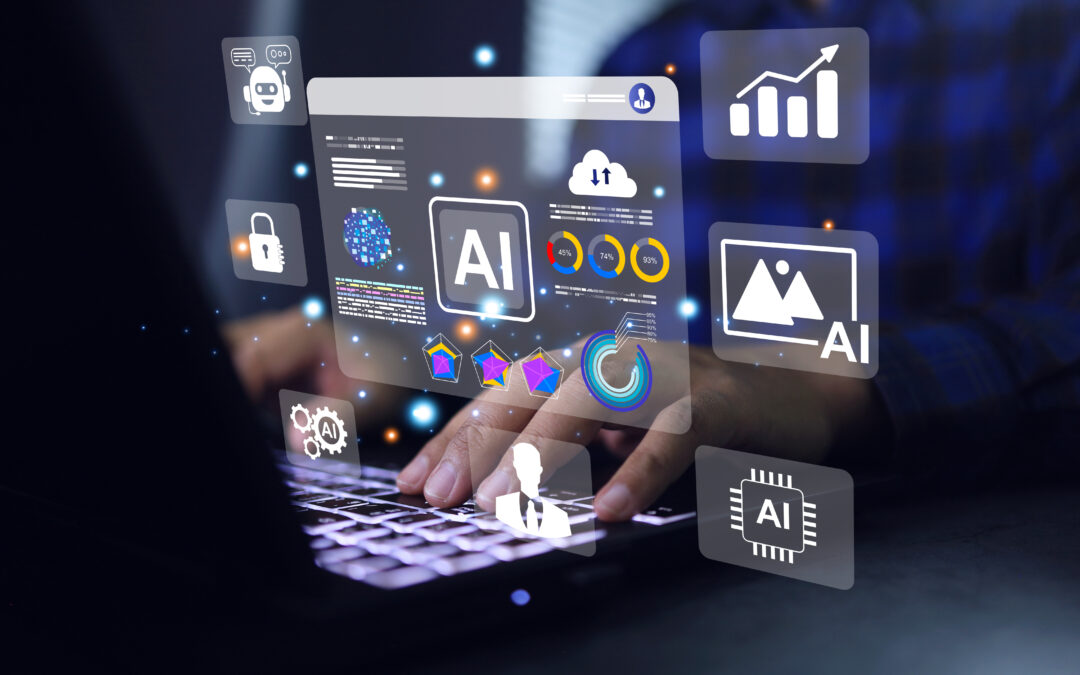In this episode of Transform Your Workplace, host Brandon Laws sits down with Stephen Lytle, a seasoned HR leader and ChatGPT enthusiast. The two discuss common misconceptions about the capabilities and risks of AI. Read on to gain valuable insight into how you can take some work off of your plate by leaning on AI as your “always-there and ready” virtual intern.
GUEST AT A GLANCE
Stephen Lytle, SHRM-SCP, is a self-proclaimed ChatGPT Enthusiast and seasoned HR leader, with over fifteen years of experience in crafting and implementing HR strategies that drive organizational success and individual empowerment.

A QUICK GLIMPSE INTO OUR PODCAST
🔊 Podcast: Transform Your Workplace, sponsored by Xenium HR
🎙️ Host: Brandon Laws
📋 In his own words: “The Transform Your Workplace podcast is your go-to source for the latest workplace trends, big ideas, and time-tested methods straight from the mouths of industry experts and respected thought-leaders.”
AN AI ANALOGY
There’s a prevailing unease surrounding ChatGPT and generative AI, mainly because people fear what they don’t understand. According to guest Stephen Lytle, it’s akin to our apprehension about the internet – we’re familiar with its existence, but the inner workings elude us. In essence, generative AI, particularly ChatGPT, shares this mysterious quality.
Imagine having access to an extensive encyclopedia encompassing all of humanity’s recorded knowledge up to 2021. When you pose a question, generative AI and ChatGPT dive into this vast reservoir of data, searching for patterns and connections relevant to your inquiry. Then, the tool employs its predictive model to provide the most suitable response for you.
A fitting analogy, one that resonates with everyday folks, is to think of ChatGPT as a seasoned chef who has sampled every dish ever created. When you ask this culinary expert how to make a peanut butter and jelly sandwich, the chef considers the myriad ways it has been prepared, recounting various recipes, ingredients, techniques, and cultural variations. Of course, since your question was general in nature, he produces a general response about your sandwich inquiry. So it is with ChatGPT. However, if you specify that you want a peanut butter and jelly sandwich on wheat bread, cut into triangles, with crunchy peanut butter, ChatGPT, like a good chef, will provide you with the best-suited recipe for your request. With both a seasoned chef and ChatGPT, providing vague details obviously begets the common rather than the specific.
Guest Stephen Lytle clarified that ChatGPT isn’t “trained to develop new learning or new concepts.” Instead, its core purpose lies in predictive analysis, and that’s why Stephen encourages crafting precise prompts and tailoring them to specific contexts. By narrowing down the vast realm of potential responses with your inquiry, you ensure that you receive the optimal answer. In other words, the more specific your request, the more specific ChatGPT’s answer.
PODCAST EPISODE HIGHLIGHTS
It’s Not New
“I tell people this generative AI thing is kind of new, but AI is not new. If you remember Microsoft Word when Clippy, the little paperclip would pop up and be like, ‘Hey, do you need help?’ That was artificial intelligence. Every time you write an email and Outlook is finishing the sentence for you, that’s generative AI. That’s what people fail to understand. It’s not something new. It’s just that we’re using the technology in a different way today.”
A Great Time-Saver
“We do welcome-to-the-team emails anytime we hire somebody new. We talk a little bit about what their role is, who they’re reporting to, what their background is — a little personal information. And while I’m pretty articulate, and I can write those very well, it takes time […] to do it right. And so I uploaded five examples of me writing those in the past and uploaded the email that one of the new candidates sent me. And I said, ‘Here are five examples of what we used. Here’s the new information. Write me a new one.’ And within 30 seconds, I had a perfectly executed welcome-to-the-team letter and people saying, ‘Man, you write these so well.’ But I didn’t let them in on that secret that I’m now using technology to do so.”
It Starts with Leadership
“The introduction of generative AI in the workplace can be a sensitive matter. People talk about their fears. Is AI going to replace my job? And how’s my job going to change because of AI? And to alleviate fears and build trust, I really think that leaders must first adopt the technology themselves, exploring and understanding its benefits. To talk about something that you’ve never actually gotten onto and used, or to try to develop policies for that really […] doesn’t make sense. So what we really need to do is have leaders go on and say, ‘Oh, let me have it help me with an email,’ right? ‘Let it help me with my annual evaluation that I need to write. Let it help me do A, B or C.’ And once they start to recognize the benefits of it, I think the leaders will start to be more of a proponent for that.”
Allaying Any Fears
“I really think leaders just have to become advocates for this technology and guide their teams in the effective use, so that’s going to require transparent communication about it. It’s going to take collaboration with different teams around building policies around responsible use, if necessary. Think of it as a process of nurturing a garden. You have to have careful planning, you have to educate, and you really have to share the ownership to lead that growth. So I think that that’s one area where the leadership component is really important because you don’t want people to be afraid of this.”
Empowering Your Team
“Identifying team members that can be subject matter experts can really empower, one, that individual, and then two, they can be a champion for it and inspire others for that us — just like any other change management. And so now that champion becomes a beacon of knowledge and expertise. They help guide others. They help answer questions. They help alleviate concerns. And you’ve helped them develop and become a peer leader. And you’ve also started to drive innovation at your company.”
AI as an Intern
“I do think that treating generative AI like an intern is probably a pretty vivid and practical analogy. I mean, imagine having an intern who’s always available, never gets tired, always wants to sift through vast amounts of information and data in seconds, right? They can handle those mundane tasks. They can research complex topics. They can even provide creative insights. […] It is a fantastic analogy because it can enhance productivity, can offer innovative insights, but ultimately, it doesn’t replace the human touch, right? So you’ve got to think about some of these other things where you lean in, like emotional intelligence, empathy, judgment, intuition. These are uniquely human attributes that will always remain vital in the workplace, especially in HR, that generative AI cannot replace.”
Executing a Shared Vision
“I think, first and foremost, crafting policy and governance structures for AI integration is complex, and it should be a collaborative effort, right? And so I think about it as simply a jigsaw puzzle where every department — operations, HR, information security, legal, ethics — they all hold a different piece to that puzzle, right? The alignment, the cooperation, shared vision are what’s crucial to create that coherent picture.”
LEARN MORE
Check out Stephen Lytle’s HR consulting company, 813HR, and learn how to integrate ChatGPT and other technology into your HR strategy.
